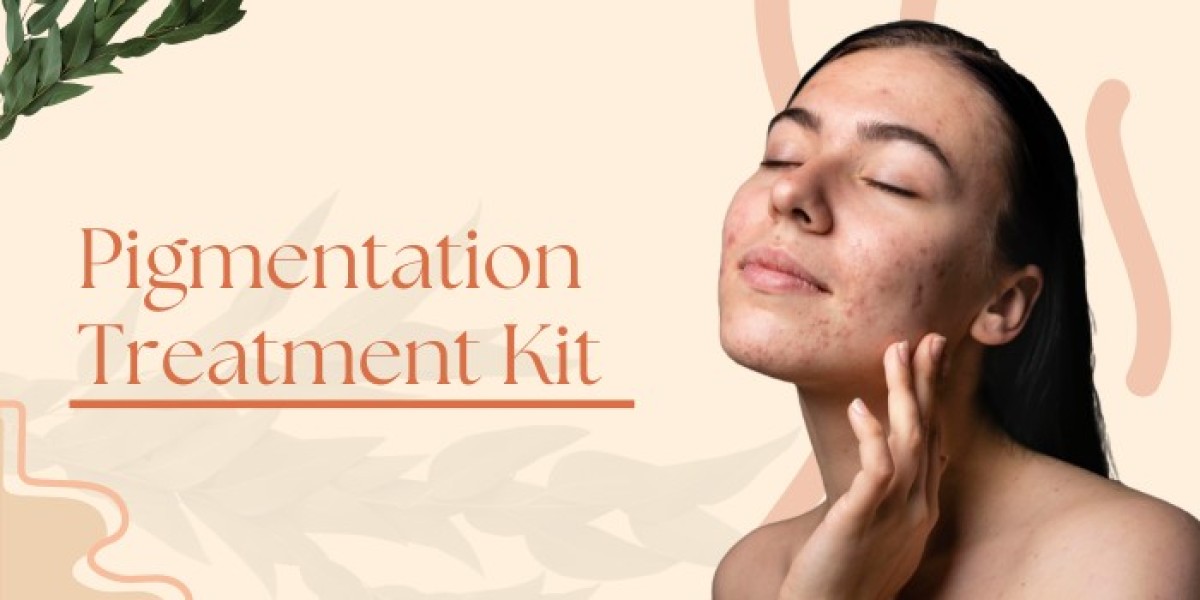Pigmentation issues, such as dark spots, uneven skin tone, and hyperpigmentation, are common skin concerns faced by many. With the growing popularity of pigmentation treatment kit, users often ask: How long does it take to see results? Understanding the timeline and factors involved can help set realistic expectations. In this article, we’ll explore the various components and effects of pigmentation treatment kits, and what you can anticipate in terms of results.
What Is a Pigmentation Treatment Kit?
A pigmentation treatment kit is a combination of skincare products designed to reduce or eliminate dark spots, age spots, melasma, and other forms of hyperpigmentation. These kits typically include:
- Cleansers that gently remove impurities.
- Exfoliators that eliminate dead skin cells and stimulate cell turnover.
- Serums containing active ingredients like Vitamin C, Niacinamide, or Alpha Arbutin.
- Moisturizers to hydrate and protect the skin barrier.
- Sunscreen, a critical step to prevent further pigmentation.
Each product in the kit has a specific role in addressing pigmentation, but the time it takes for results to appear varies based on several factors.
How Do Pigmentation Treatment Kits Work?
Pigmentation treatment kits work by targeting the melanin production process in the skin. Melanin is the pigment responsible for skin color, and when overproduced, it leads to dark spots or patches. The products in the kit usually contain brightening agents that inhibit melanin production and promote skin renewal. Common ingredients include:
- Vitamin C: A powerful antioxidant that lightens dark spots by interfering with melanin synthesis.
- Niacinamide: Reduces hyperpigmentation and improves skin elasticity.
- Retinoids: Accelerate cell turnover, helping to fade dark spots faster.
- Glycolic Acid: An alpha hydroxy acid that exfoliates the top layer of skin, revealing brighter, more even-toned skin.
With consistent use, these products help fade pigmentation and restore a more even complexion. But the timeline for visible results depends on various factors.
Factors Influencing the Results of Pigmentation Treatment Kits
1. Severity of Pigmentation
The severity of the pigmentation plays a critical role in determining how long it will take to see results. Mild pigmentation, such as post-inflammatory hyperpigmentation (PIH) from acne, might show improvement within a few weeks. On the other hand, more stubborn conditions like melasma or sun damage may take longer—sometimes three to six months or more—to see significant improvements.
2. Skin Type and Tone
Different skin types react differently to pigmentation treatments. For example, individuals with darker skin tones might take longer to see results due to the higher concentration of melanin. Oily or acne-prone skin may require specific formulations to avoid breakouts while treating pigmentation. Dry skin might benefit from more hydrating treatments but may need additional time for visible changes because of the slower rate of skin turnover.
3. Active Ingredients
The active ingredients in your pigmentation treatment kit will also impact the time it takes to see results. Products with high concentrations of brightening agents like Vitamin C or hydroquinone can provide quicker results but may also cause irritation if not used properly. Gentler ingredients like licorice extract or kojic acid may take longer to work but are better suited for sensitive skin.
4. Consistency of Use
Consistency is key when it comes to skincare. Using your pigmentation treatment kit regularly—ideally twice a day—will yield faster results than sporadic use. It’s important to follow the recommended application guidelines, as overuse may lead to irritation, while underuse may delay results.
5. Sun Protection
Exposure to the sun can worsen pigmentation and slow down the results of your treatment. If you’re not diligent with using broad-spectrum sunscreen with an SPF of 30 or higher, you may not see the desired results, regardless of how effective the treatment kit is. Protecting your skin from UV rays is crucial to prevent new pigmentation from forming.
How Long Before You See Results?
Week 1-2: Initial Skin Adjustment
In the first two weeks, your skin may begin to adjust to the new products. During this period, it’s normal to experience mild irritation, dryness, or redness as your skin gets used to active ingredients. You might not notice any major improvements in pigmentation yet, as the skin is still acclimating to the treatment. It’s important to remain patient and consistent with the routine.
Week 3-4: Early Signs of Improvement
By the third or fourth week, you may start to notice subtle changes in your skin’s texture and tone. Some dark spots may begin to lighten, and overall skin brightness may improve. At this point, the active ingredients in the treatment kit are starting to break down excess melanin and exfoliate dead skin cells.
Month 2: Noticeable Changes
By the second month, you should see more visible changes in the appearance of pigmentation. Dark spots will likely be lighter, and the skin tone may appear more even. If you’re treating more severe pigmentation like melasma, progress will be slower, but consistent application will start to show results around this time.
Month 3 and Beyond: Significant Results
After three months of regular use, you should see significant improvements in pigmentation. Most dark spots and patches will have faded substantially, and your overall complexion will be brighter and more even. For severe hyperpigmentation, this is when you might see the most noticeable differences, though continued use will still be necessary to maintain results.
When Should You Consider Other Treatments?
If, after three to six months, you do not see the results you were hoping for, it may be time to consider alternative treatments. Some pigmentation issues are more resistant and may require stronger interventions, such as:
- Chemical Peels
- Laser Treatments
- Microneedling
- Prescription-strength topical creams
Consulting with a dermatologist can help you determine if these more intensive options are right for you.
Tips for Maximizing Results from Pigmentation Treatment Kits
- Follow the Instructions Carefully: Misusing products can lead to irritation or delayed results.
- Use Sunscreen Daily: UV rays can undo your progress, so apply sunscreen every morning, regardless of the weather.
- Be Patient: Pigmentation treatments take time, so it’s important to stay consistent and avoid expecting overnight results.
- Hydrate and Nourish: Support your skin with proper hydration and a healthy diet to encourage regeneration and repair.
In conclusion, pigmentation treatment kits are effective solutions for fading dark spots and evening out skin tone, but they require time, consistency, and sun protection. Depending on the severity of your pigmentation and the products used, you can expect to see noticeable improvements within one to three months, with continued progress over time.









